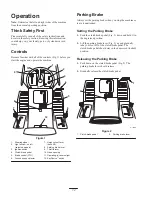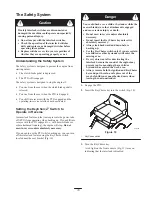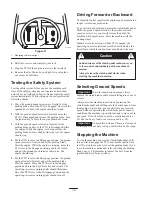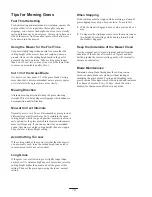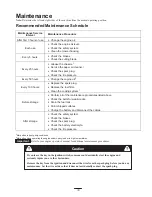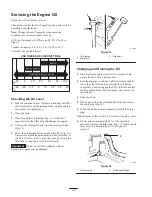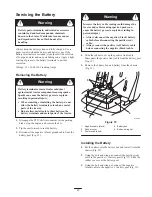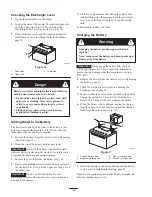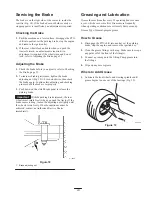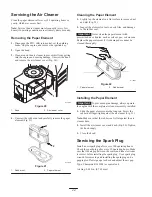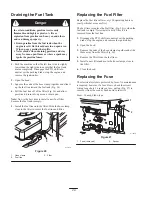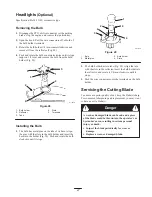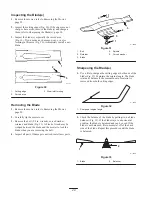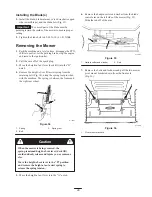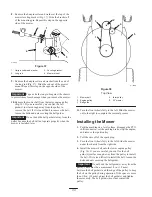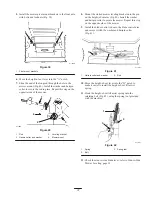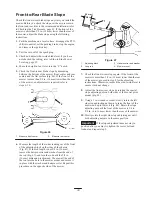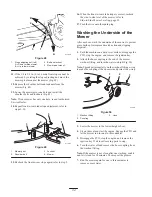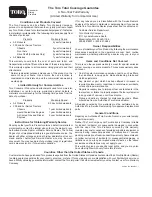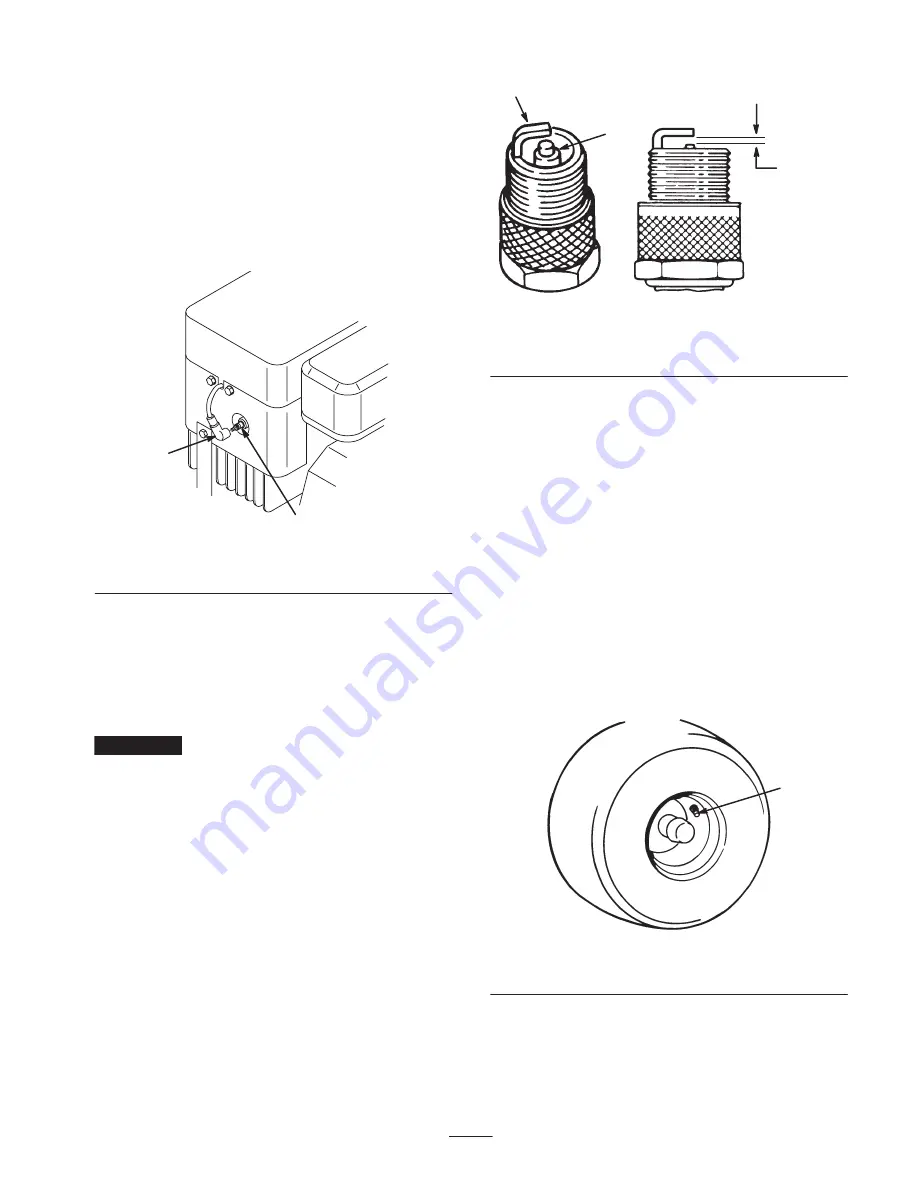
25
Removing the Spark Plug
1. Disengage the PTO, shift into neutral, set the parking
brake, stop the engine, and remove the ignition key.
2. Open the hood.
3. Pull the wire off of the spark plug (Fig. 23). Clean
around the spark plug to prevent dirt from falling into
the engine and potentially causing damage.
4. Remove the spark plug and metal washer.
m–1884
2
1
Figure 23
1.
Spark plug wire
2.
Spark plug
Checking the Spark Plug
1. Look at the center of the spark plug (Fig. 24). If you see
light brown or gray on the insulator, the engine is
operating properly. A black coating on the insulator
usually means the air cleaner is dirty.
Important
Never clean the spark plug. Always replace
the spark plug when it has a black coating, worn electrodes,
an oily film, or cracks.
2. Check the gap between the center and side electrodes
(Fig. 24). Bend the side electrode (Fig. 24) if the gap is
not correct.
m–1870
0.030 in.
(0.762 mm)
2
3
1
Figure 24
1.
Center electrode insulator
2.
Side electrode
3.
Air gap (not to scale)
Installing the Spark Plug
1. Install the spark plug and metal washer. Make sure that
the air gap is set correctly.
2. Tighten the spark plug to 15 ft.-lb. (20 N
⋅
m).
3. Push the wire onto the spark plug (Fig. 23).
4. Close the hood.
Checking the Tire Pressure
Maintain the air pressure in the front and rear tires at 20 psi
(138 kPa). Check the pressure at the valve stem after every
25 operating hours or yearly, whichever occurs first. Check
the tires when they are cold to get the most accurate
pressure reading.
m–1872
1
Figure 25
1.
Valve stem


